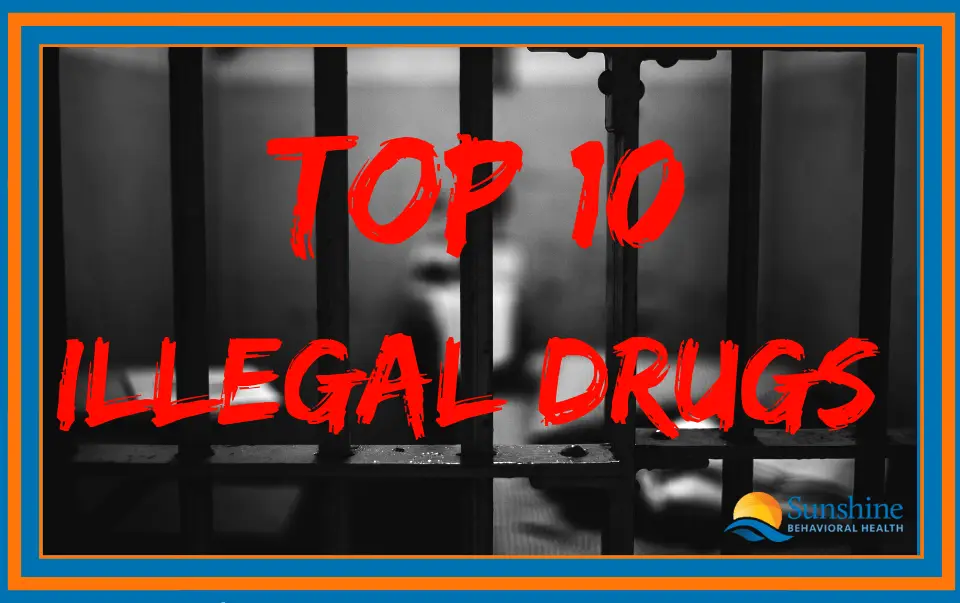
The Top 10 Most Commonly Used Illegal Drugs
Many drug users may think that the only consequences of using drugs is the possibility of getting caught and being whisked away to jail. The truth, however, is that the prevalence and side effects of every illegal drug can lead to a life of suffering physically, emotionally and mentally. Here is a list of ten of the most commonly used illegal drugs.Cocaine
Often referred to as “coke”, “powder”, “blow” and “snow”, cocaine is an intense, stimulant drug with extremely addictive properties. Cocaine is derived from coca leaves and the substance can be broken down into many forms before use. All mucous membranes readily absorb cocaine, but the effects of Cocaine depend on whether it was smoked or injected and the intake amount. Once a method of use is chosen, cocaine reaches the brain in a matter of seconds – creating an intense euphoric effect, often referred to as a “rush.”Marijuana
Marijuana , also called Cannabis, Pot, Weed and more,refers to dehydrated leaves, stems, flowers, and seeds of the hemp plant, Cannabis sativa. This plant is considered a mind-altering psychoactive drug as it contains the chemical delta-9-tetrahydrocannabinol (THC) and other related compounds. Grown largely in the United States, Mexico, Canada, Asia, South America, and the Caribbean, marijuana can be grown and harvested in both indoor and outdoor settings. While many users first try the substance experimentally and never fully become addicted, Marijuana does have addictive properties and is still largely illegal. Although many states within the U.S. have legalized marijuana for personal, recreational use or for medical use, it is still listed under the Controlled Substances Act a Schedule I substance. The U.S. Food and Drug Administration is in charge of approving drugs for medicinal use within the U.S. and they have not yet approved a marketing application for a marijuana product to be associated or used clinically.Heroin
As an opioid made from morphine, Heroin is a Schedule I substance under the Controlled Substances Act. This means that it has a high potential for abuse and has no currently accepted medical use in treatment in the United States. The substance originates from the pods housing the seeds of opium poppy plants that typically grow in Southeast and Southwest Asia, Mexico, and Colombia. Addiction is one of the more significant effects of heroin use. With regular use, tolerance to heroin rapidly develops. Once this happens, users have to use more just to try and match the same high. As a result, the higher lead to a physical and mental dependence on heroin.Opium
Opium is an extremely addictive non-synthetic narcotic. It comes from the poppy plant, Papaver somniferum. This plant is an important part of many other types of narcotics, including heroin, morphine, and codeine. Typically smoked, intravenously injected or taken in pill form, opium is often times reported to inhibit muscle movement in the bowels, dry out the mouth and mucous membranes in the nose and leads to physical and psychological dependence. Opium is a Schedule II substance under the Controlled Substances Act – meaning that users have a high potential for abuse that could potentially lead to psychological or physical dependence.Methamphetamine
Methamphetamine is a highly addictive drug often referred to as “Speed,” “Crystal,” “Tweak,” and additional street names. Those who smoke or inject it report a brief “rush” much like cocaine users. When ingested orally or through snorting, the drug produces a long-lasting high. Chronic users of Methamphetamine can exhibit erratic behavior, including paranoia and aggression. Users have also been reported to experience extreme anxiety, confusion, hallucinations and feel the sense of bugs crawling on and under their skin.Amphetamine
Not to be confused with methamphetamine, amphetamine were first marketed in the 1930s as Benzedrine – an inhaler sold over-the-counter to treat nasal congestion. By 1937 it was made available as a prescription in pill form and treated ADHD and narcolepsy. Amphetamine is a stimulant, which means that process within the body are stimulated when in use. This means that a user may be extra attentive and may see an increase in activity. In addition, both the heart rate and blood pressure of the user may increase drastically. Since the early 1930’s, the general use and extreme abuse of amphetamine skyrocketed. “Uppers” as they are referred to as, create a quick and intense tolerance in users – making them feel energetic and confident. While amphetamine is an active ingredient in a few legal drugs, like Adderall and Dexedrine, the substance is still classified federally as a Schedule II stimulant and it is still illegal.MDMA
Most commonly known in the form of Ecstasy, MDMA is a synthetic chemical that acts as both a stimulant and psychedelic. The substance produces an energizing effect – distorting time and perception and offering enhanced enjoyment. Used heavily in the 1980s, MDMA can still be found in today’s club scenes as adolescents and young adults use it to reduce inhibitions. In its purest form, MDMA is known as “Molly.” Molly and Ecstasy are commonly available as a capsule, tablet or powder. The side effects include increased heart rate, muscle cramps, blurred vision, hallucinations, nausea, and chills. Someone who has become addicted and experiences withdrawal symptoms may experience psychosis, panic attacks, insomnia, paranoia and depression. MDMA is a Schedule I drug under the Controlled Substances Act, meaning people using it are at a risk for abuse and has no accepted use, medically speaking, in treatment plans in the United States.GHB
A depressant that is approved for controlled use in the treatment of specific conditions, such as narcolepsy, a condition that creates uncontrollable daytime “sleep attacks,” GHB is created illegally in both domestic and foreign underground laboratories. The substance is usually sold as a liquid and can be dissolved in water, juice or alcohol. It is even packaged as a powder and is colorless and slightly salty in taste. GHB has calming and euphoric effects and users often indulge to increase libido, suggestibility, passivity and to cause amnesia. GHB is a Schedule I controlled substance and FDA-approved GHB products are Schedule III substances under the Controlled Substances Act.LSD
LSD is a potent hallucinogen made from lysergic acid. This acid is found in fungus’ that grow on grains, such as rye. The substance can be found in tablet, capsule, and liquid form and is colorless and odorless with slightly bitter taste. Usually abused in its oral form, LSD consequently provides many side effects. This includes hallucinating – distorting time, shape, colors, sound, touch and even the user’s own body image. Listed as an illegal Schedule I substance under the Controlled Substances Act, LSD inhibits users from effectively forming sound judgements – making them susceptible to injury.Benzodiazepines
Only legally available through prescription, Benzodiazepines, also known as “Benzos” and “Downers,” are depressants that produce hypnosis and sedation states in the person, relieves anxiety and some muscle spasms, while also reducing the occurrence of seizures. The substance slows down the central nervous system and abusers of Benzodiazepines typically suffer with amnesia, irritability, hostility, disturbing dreams and vivid. The most common forms of Benzodiazepines can be found in prescription drugs Valium, Halcion, Ativan, Xanax, and Klonopin. Without a prescription, it is illegal and Benzodiazepines are controlled in the Schedule IV group of the Controlled Substances Act.A Message From Our CEO
Medical disclaimer:
Sunshine Behavioral Health strives to help people who are facing substance abuse, addiction, mental health disorders, or a combination of these conditions. It does this by providing compassionate care and evidence-based content that addresses health, treatment, and recovery.
Licensed medical professionals review material we publish on our site. The material is not a substitute for qualified medical diagnoses, treatment, or advice. It should not be used to replace the suggestions of your personal physician or other health care professionals.





